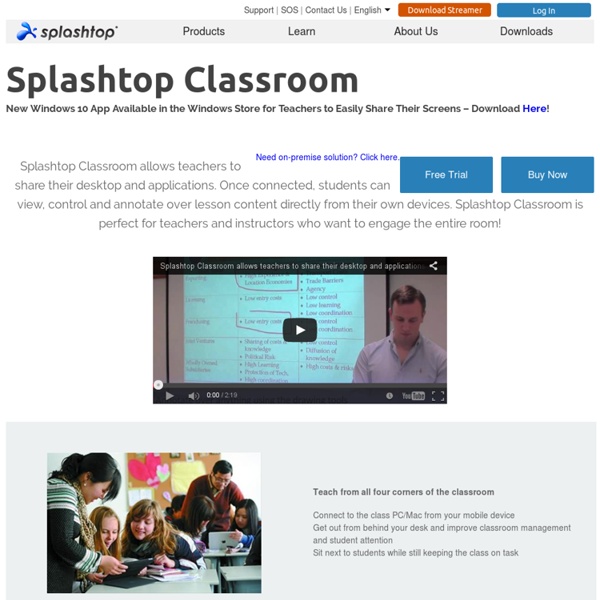CLASSROOM - Splashtop Inc.
Splashtop Classroom allows teachers to share their desktop and applications. Once connected, students can view, control and annotate over lesson content directly from their own devices. Splashtop Classroom is perfect for teachers and instructors who want to engage the entire room! Teach from all four corners of the classroom Connect to the class PC/Mac from your mobile device Get out from behind your desk and improve classroom management and student attention Sit next to students while still keeping the class on task Turn your mobile device into an interactive whiteboard Use the toolbar to draw, highlight or write over any content Take snapshots of the screen, save, then share with students Draw over flipchart backgrounds or include your own worksheets Use the spotlight and screen shade tools to keep students focused Share anything. Bring the lesson to the student Support 1:1 and BYOD initiatives Create a Splashtop Account to Complete Purchase
Twig - Educational science resources
Mind Mapping Software - Create Mind Maps online
Rogō
Web 2.0: A New Wave of Innovation for Teaching and Learning? (EDUCAUSE Review
The Web version of this article differs somewhat from the print edition, reflecting recent and fast developments in the Web 2.0 world. Nothing has been cut from the earlier, print version; instead, some content has been added as new projects emerged. © 2006 Bryan Alexander EDUCAUSE Review, vol. 41, no. 2 (March/April 2006): 32–44. Bryan Alexander Bryan Alexander is Director for Research at the National Institute for Technology and Liberal Education (NITLE). The term is audacious: Web 2.0. Many people—including, or perhaps especially, supporters—critique the “Web 2.0” moniker for definitional reasons. Concepts Social software has emerged as a major component of the Web 2.0 movement. These sections of the Web break away from the page metaphor. Like social software, microcontent has been around for a while. This openness is crucial to current Web 2.0 discussions. Why does this matter, and why do such projects not degenerate into multisubjective chaos? Projects and Practices
Scholar
Related:
Related:



